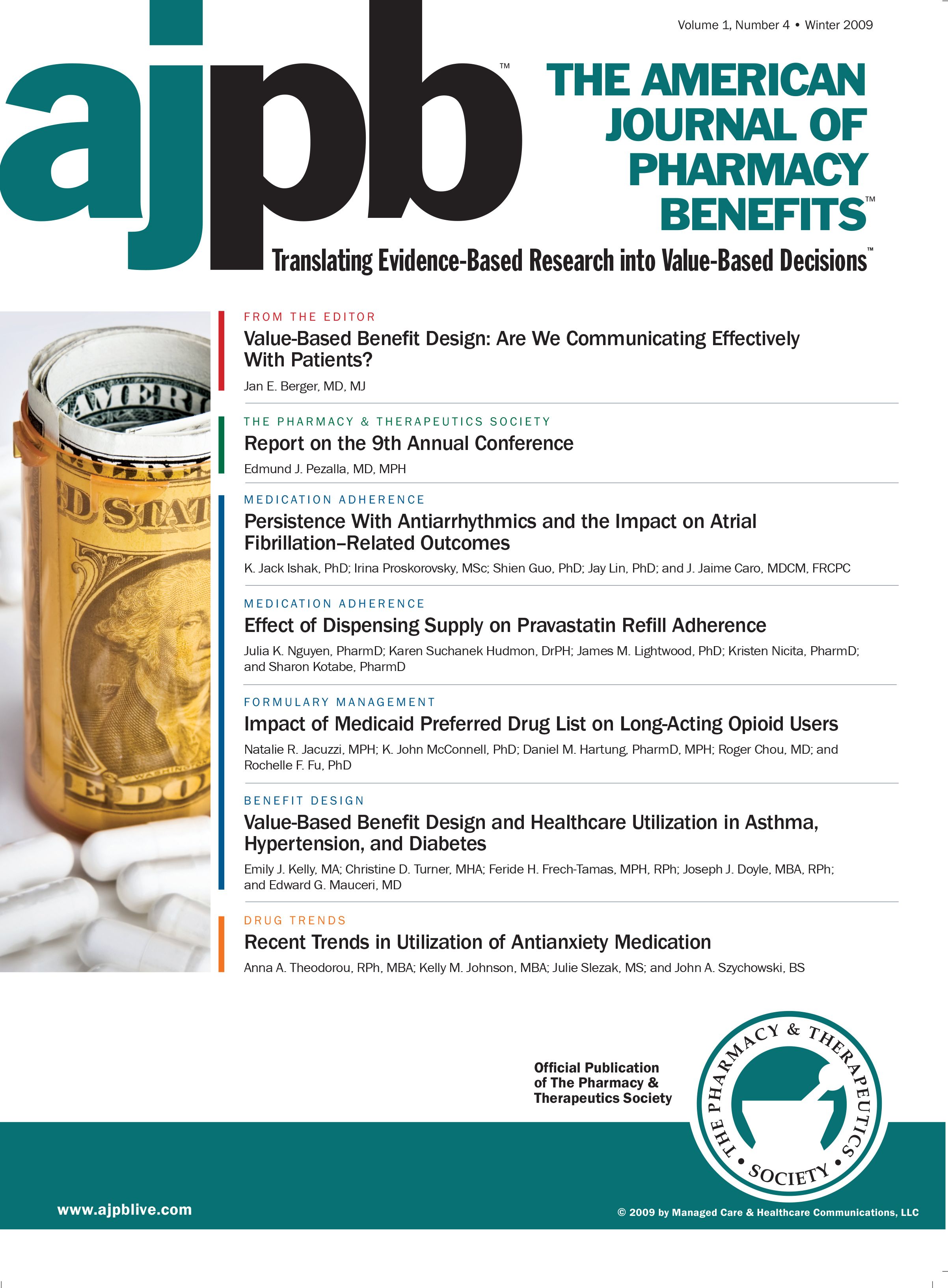Publication
Article
AJPB® Translating Evidence-Based Research Into Value-Based Decisions®
P&T Committees Today: Ensuring They Bring Value to Your Organization
Author(s):
Ultimately, the overriding goal of a P&T committee must be to obtain insights and perspectives from all who are touched by the process.
To address the multiple needs of constituents— from patients and plan sponsors to prescribing physicians and pharmacists—today’s pharmacy and therapeutics (P&T) committees must move beyond the traditional areas of safety and efficacy to have a 360-degree perspective on a number of critical issues. For example, how can the formulary help to
• Ensure optimal compliance? • Avoid unnecessary patient emergency department visits and hospitalizations? • Address ethical concerns?
Effectively dealing with these important issues requires participation by a broad cross-section of representatives involved in, and touched by, the prescription drug selection process. Whether the task is development of a new P&T committee or restructuring of an existing one, here are some of the voices and perspectives that must be brought into the discussion to assist in comprehensively identifying and addressing all issues.
BROAD RANGE OF PHYSICIAN SPECIALISTS
The question is not whether specialists should be included in the process, but which ones. One of the best ways to decide is first to undertake a thorough review of claims data to identify medications and conditions that are most prevalent in a population. Once those have been established, appropriate specialists can be included. The specialists do not have to be voting members on the committee, but their testimony and opinions about certain medications should be factored into every relevant decision.
Pediatricians to Geriatricians
The perspectives of professionals who have insights into a wide range of population demographics must be incorporated into the formulary development process. For example, geriatricians can supply insights into the medical, psychological, and social needs of seniors. Likewise, as the number of children with diseases such as asthma, diabetes, and other chronic conditions increases, pediatricians—traditionally overlooked in many P&T committees—will need to have their concerns and recommendations incorporated.
MEDICAL ETHICISTS
Medical ethicists provide guidance on how to ensure that moral and institutional values are applied to difficult healthcare decisions. Promising medical advancements bring hope, but also raise highly sensitive issues related to access, cost, duration of care, and even therapeutic exit strategies. In combination with other clinicians, ethicists help to facilitate and further discussions that can help organizations make morally sound and consistent medication decisions.
PHARMACEUTICAL ECONOMISTS
How to weigh the cost of prescription drugs within formulary development is an ongoing question. Clearly P&T committees must not base important clinical decisions on cost or rebates. Equally clear is the simple fact that analyzing certain aspects of medication costs must play some role in the process. Pharmacoeconomic studies that provide quantifiable data on outcomes related to costs can help committee members make better decisions. Issues such as side effects and the ability of a medication to reduce utilization are legitimate and necessary factors to consider when making formulary decisions.
PRACTICING PRIMARY CARE PHYSICIANS
As drug therapies become more complex and targeted toward specific disease states and even genetic profiles, it may be tempting to place greater emphasis on insights from specialists and other clinicians. However, it is critical to ensure that primary care physicians (PCPs) remain a focal point of the P&T decision process. Practicing PCPs know what works in a real-world setting and can share insights into the patient experience with drug therapies, including compliance rates and side effects. One way to maximize the value of PCP participation is to ensure that committee members are independent nonemployees who represent a broad cross-section of the community served.
Clinical and Community Pharmacists
Inclusion of pharmacists on P&T committees is a given. However, it is important to include a wide range of pharmacists—clinical and research pharmacists, and pharmacists practicing in the community. Pharmacists working in a retail setting have invaluable insights about how patients actually use and respond to prescription drugs. Clinical pharmacists will bring in-depth knowledge of pharmacology, drug-delivery systems, and pharmacokinetics. The ability of the committee to avail itself of a wide range of pharmacist perspectives will help to refine and improve the formulary development process.
OBTAINING THE 360-DEGREE PERSPECTIVE
Increasingly, organizations are including lay people from their communities in the P&T committee process. Additionally, hospitalists, psychologists, and nurses all can provide invaluable insights. Finally, ensuring that a majority of members who may participate in the P&T committee process are not employees and maintaining anonymity to avoid potential conflicts help ensure that recommendations are based solely on clinical attributes, not financial issues.
Ultimately, the overriding goal of the committee must be to obtain 360 degrees of opinion—insights and perspectives from all who are touched by the process. The result of such a comprehensive and inclusive effort will be a much more effective and better-supported formulary for all organizations.







